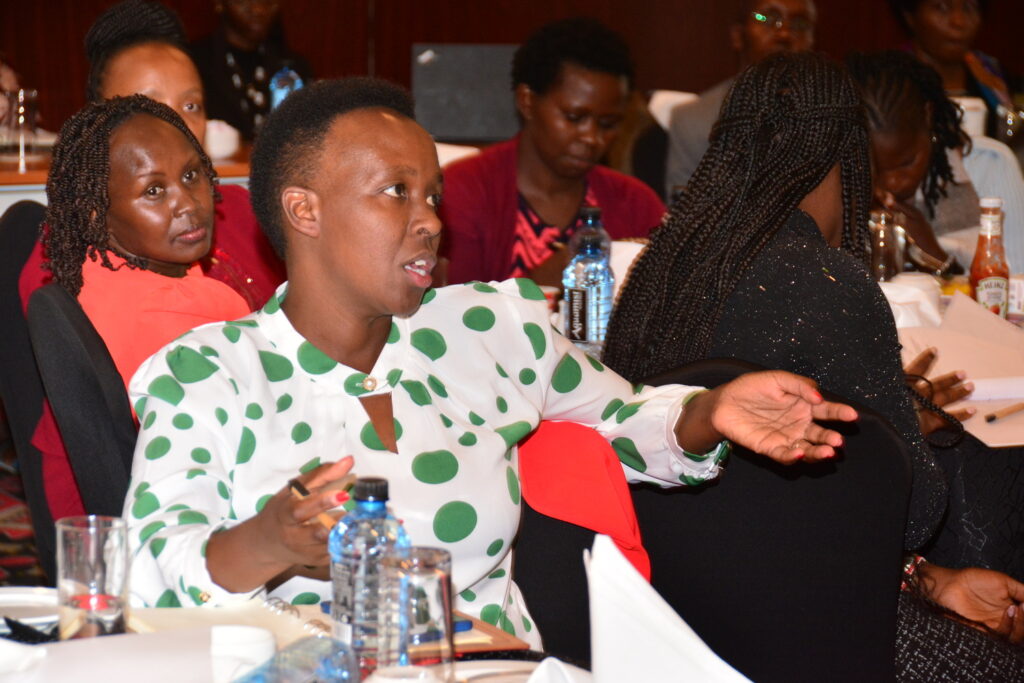By Sharon Atieno | sharonphoebeatieno@gmail.com
Kenya will launch the long-acting pre-exposure prophylaxis (PrEP) options in 2025, in its efforts to reduce HIV infection rates.
Dr Jonah Onentiah, the PrEP Programme Technical Lead at the Ministry of Health’s National Aids and Sexually Transmitted Infections (STIs) Control Programme (NASCOP), while speaking with TV journalists during a Media for Environment, Science, Health and Agriculture (MESHA) café in Nairobi, said the options included the Dapivirine Vaginal Ring (DVR) and Cabotegravir (CAB-LA) injection.
According to the 2023 HIV Estimates, approximately 22,154 new HIV infections were recorded in 2022. About seven of 10 (75 per cent) were adolescents and young adults aged between 15 and 34 years.
“Preparatory activities are ongoing for the adoption of the long acting PrEP products,” said Dr Onentiah. He added that both interventions had already been approved by the country’s Pharmacy and Poisons Board (PPB).
The DVR is a silicone ring inserted in the vagina to slowly release the antiretroviral drug – dapivirine – slowly for 28 days. Studies conducted on the ring have found it to be 35 per cent and 50 per cent effective in HIV risk reduction.
On the other hand, CAB-LA is a bimonthly injection found to be 79 per cent more effective in reducing HIV infections, compared to oral PrEP.
“There are ongoing demonstration studies that will generate evidence on how best to scale up these products,” said Dr Onetiah, adding that the studies would show which population was best suited for which product.
“Any decision we make will be based on the evidence, looking at the changing HIV epidemic, the age group that is most affected and the population that is likely to contribute to the spread of new infections,” he said.
The United States Agency International Development (USAID) supported Catalysing Access to New Prevention Products to Stop HIV (CATALYST) is one of the said studies. With nearly 4,000 participants in Kenya, Lesotho, South Africa, Uganda, and Zimbabwe, CATALYST provides full information on access to the oral PrEP, DVR and CAB-LA.
The CATALYST study, which started in 2023, aims to increase access to these three prevention methods and comprehensive counseling to support young women and girls in making informed decisions. The study results, according to USAID, will improve access, counselling and options for women, as these new generation HIV prevention products enter the market.
Millicent Kiruki, a Public Health practitioner at LVCT noted that there were a number of populations still struggling with HIV infections. She mentioned adolescent, young women, and key populations (female sex workers, men having sex with other men, inmates and the transgender).

Advocating for more prevention methods, Ms Kiruki said: “When we offer options, we increase persistence on the chosen method – the person is likely to use the method for a longer time.”
She said having options would offer better outcomes, “because if option A does not work, option B may”.
Observing that women are more vulnerable when it comes to HIV infection, Ms Kiruki said: “We don’t have any perfect drug, but through choice, we really help women to explore the advantages and challenges of each prevention method. When they do have an empathetic and knowledgeable provider, they can choose what works for them.”
Besides DVR and CAB-LA, lenacapavir, a biannual injection is being evaluated as a long-acting HIV prevention in multiple ongoing clinical trials. The first such trial, titled PURPOSE-1, was carried out in Uganda and South Africa among women who are born and identify as women. The trial found the drug to be 100 per cent effective in HIV prevention.
The MESHA café was meant to sensitize TV journalists on the milestones made in HIV prevention research and progress in rolling out the products especially in Kenya. It was preceded by an editors’ café where health editors from several Kenyan media houses were updated on key scientific interventions to tackle HIV/AIDS and online resources available to help journalists tell the HIV story accurately.










